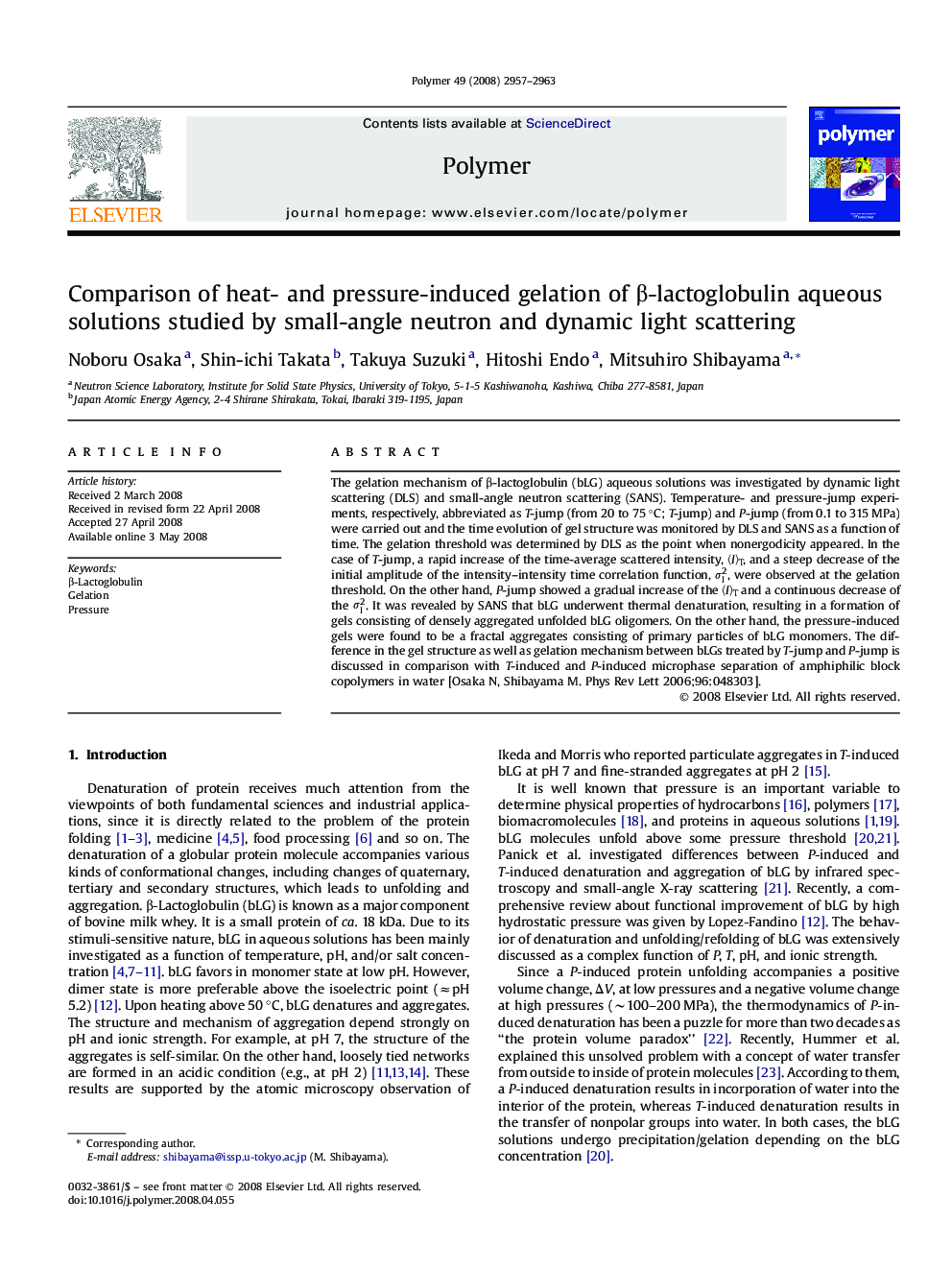| Article ID | Journal | Published Year | Pages | File Type |
|---|---|---|---|---|
| 5186997 | Polymer | 2008 | 7 Pages |
The gelation mechanism of β-lactoglobulin (bLG) aqueous solutions was investigated by dynamic light scattering (DLS) and small-angle neutron scattering (SANS). Temperature- and pressure-jump experiments, respectively, abbreviated as T-jump (from 20 to 75 °C; T-jump) and P-jump (from 0.1 to 315 MPa) were carried out and the time evolution of gel structure was monitored by DLS and SANS as a function of time. The gelation threshold was determined by DLS as the point when nonergodicity appeared. In the case of T-jump, a rapid increase of the time-average scattered intensity, ãIãT, and a steep decrease of the initial amplitude of the intensity-intensity time correlation function, ÏI2, were observed at the gelation threshold. On the other hand, P-jump showed a gradual increase of the ãIãT and a continuous decrease of the ÏI2. It was revealed by SANS that bLG underwent thermal denaturation, resulting in a formation of gels consisting of densely aggregated unfolded bLG oligomers. On the other hand, the pressure-induced gels were found to be a fractal aggregates consisting of primary particles of bLG monomers. The difference in the gel structure as well as gelation mechanism between bLGs treated by T-jump and P-jump is discussed in comparison with T-induced and P-induced microphase separation of amphiphilic block copolymers in water [Osaka N, Shibayama M. Phys Rev Lett 2006;96:048303].
